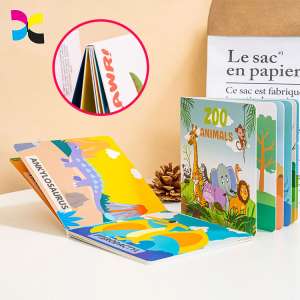Board Game History: Back in 2008, a young man named Adam Poots was awaiting jury duty. Like most jury duty experiences, it was dragging through the day, with no guarantee of even being picked in the end.
To pass the time, he perused a manual for a role-playing game. He was struck with an idea while reading: not only did the rules seem flimsy to him, but he believed he could improve the game mechanics.
Fast forward to 2012 where Adam started a Kickstarter for his RPG project. On Kickstarter, a person asks for backers to invest in their passion project. Adam initially asked for a $35,000 goal.
To everyone’s surprise, it became the most funded board game in the history of Kickstarter. Thus, it began Kingdom Death, the insanely detailed role-playing board game.
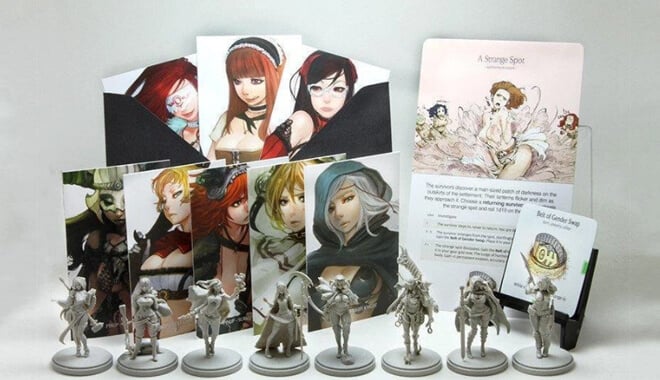
How did he do it? What are the best steps to take in developing your own board game? There are many avenues to choose when throwing around your idea for a project.
Now, more than ever, developing things like board games has never been easier. Not only that but people who aren’t even familiar with making a board game can easily do it.
Additionally, you could eventually shop your board game around to see if there would be interest in a possible board game. The transition from tabletop games into videogames has been one of the most creative and fun transitions in role-playing history.
Not convinced? Try these 5 easy steps to creating your very own board game!
Table of Contents:
How to Make a Board Game
Brainstorm & Play Games

I know this seems kind of obvious. You need the idea, or at least the seed of an idea, ruminating around in your head to even begin the process of making a board game.
If you are like Adam Poots, you have an idea stemming from making something better. You could take this route, or just pursue something you are passionate about.
Do you like puzzle games, RPGs, or strategy games? Any of these are viable options, especially in the brainstorming phase.
For added productivity, inviting people to help throw ideas around is a great benefit. Where you could have a solid idea, other people could add new perspectives to the process that perhaps you had not thought of.
Personally, I would love to make something mixed between Risk and a role-playing game. Just starting out with an idea like that puts you on the fast track to creating your game.
It is important to know what style of game you want to create primarily. Is it easy and fast like Exploding Kittens, or more in-depth like the H.P. Lovecraft-inspired Mountains of Madness?
With brainstorming, you have an amazing opportunity to world-build. Like any good fantasy/role-playing title, it usually includes a rich backstory or world that the author has put blood, sweat & tears into.
This is really your chance to let your imagination run wild.
Draw maps, name characters, build a tapestry of awesome bits of lore and story.
Many writers, namely George R. R. Martin of Game of Thrones fame, emphasize that if you want to be a successful, better writer, the prospective writer must read.
Read all the time. Read more than you write. There is no better way to become better at your trade than to completely immerse yourself in the product.
This applies to game development too. Play a lot of different games to get a good grip on what you want your game to resemble.
Outline Your Ideas
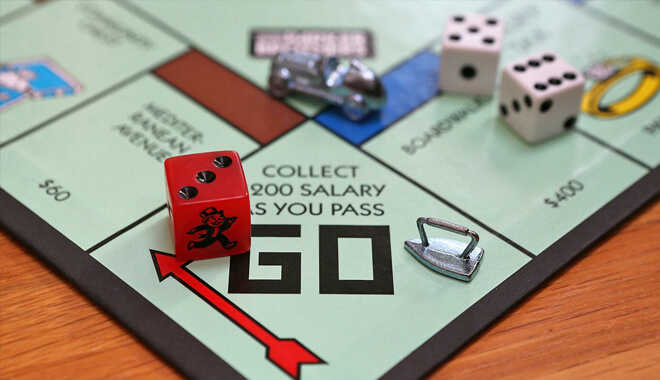
Just like brainstorming, outlining is crucial to the first foundations of your project. A killer idea is great and exciting, but unless you have it written down in detail, it won’t be easy to sell it.
Honestly, some of the best ways to do this are good old-fashioned pen and paper followed by a step-by-step of the theme of the game, rules, and other aspects that will tie it together.
A heads up though: both of these two steps could take a while. It might not happen overnight, but don’t fret! As long as you keep your creative juices flowing, you definitely can’t go wrong.
A simple way to get started is just by sketching out how things will look.
What will the board look like? How about the game pieces? Will they be unique pieces like from Monopoly? What are you trying to accomplish aesthetically?
Aspects of the game could include how long you want a typical game session to last, how many players can play at once, and how easy the rules are to learn.
With Kingdom Death, the average playtime for one complete game with friends is upwards of an unbelievable 60 hours.
That is 2 and a half days of stressful RPG gameplay. Hopefully, your board game won’t initially take a huge chunk out of people’s time and lives!
Building Board Game Pieces & Expansions
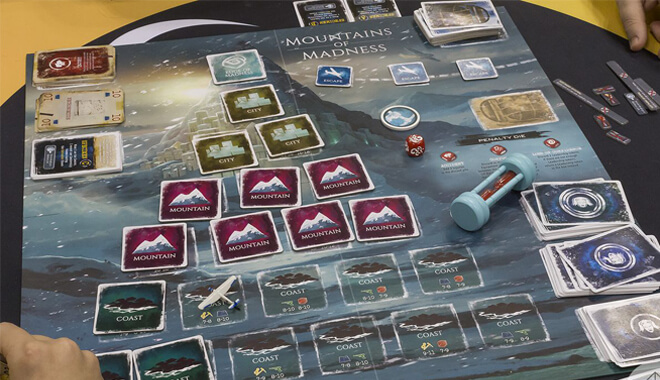
Here is where your ideas begin to literally take shape. There are many ways to implement the vision of your game board. You can simply draw it, print it, or use software to develop it.
Of course, this depends if your game depends on an actual physical board.
For the Mountains of Madness, the game board is drawn out as a large, Arctic mountain, complete with spooky, forlorn visuals. Feel free to design to your heart’s content, but make sure you have the rudimentary aspects of the board drawn out in some way.
In 11th grade woodshop, we were able to etch designs into our wood projects. If you have access to the tools, why not actually make your board in a similar fashion? Tools like this and designing software like Adobe Illustrator allow you to bring your vision to life.
Adam Poots utilized a 3D printer to make his insanely detailed game pieces. Now I know that a high-quality 3D printer isn’t exactly an easily accessible tool, but it is now a proven method for making your game pieces.
In his case, he actually developed the game board and cards based around the miniatures. You are by no means tied to the conventional outline I outlined above, but I believe it is the easiest way.
Also, keep in mind that you can always add new things to your game via expansions released at a later date, so whatever you design and show people could technically be added to forever.
Kingdom Death, as of 2018, has nearly 30 expansion packs that were promoted and created with the help of backers.
Build the Board Game & Selling
There are some sites and software to really help you along on your creative journey. Sites like The Game Crafter can help you build the beginning pieces of your game.
By using Game Crafter, you can really begin to let your game take shape. Not only that, but you can sell your finished game through the shop at Game Crafter, it being available for purchase by other users of the site and outside users.
Before the company will skim and review your game for any possible errors, (you got this far, you would hate to have an embarrassing typo lodged in some of your crucial text!), and then they can put it on sale.
The company heavily emphasizes that you don’t need to sell the game through their site and that your project can remain private unless you want it to be sold via their store.
If you decide to sell it through the company, you won’t need to worry about lengthy or complicated transactions, with Game Crafter handing the exchanging of goods, leaving you with the responsibility of collecting a sweet royalty check from your sale.
Test Your Board Game
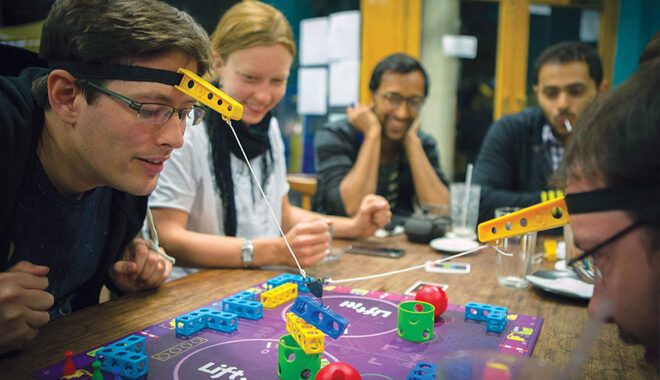
I keep finding that with each step, they become more essential to the game-making process. If you were fortunate enough to get to the point where the prototype of your game is out, you will need to playtest.
Playtesting allows you to see how the game works, and most importantly, flows.
Think of it as real-life beta testing. You need to work out any potential kinks that may arise from unforeseen complications. Maybe an aspect you thought clicked really well during development falls flat on its face when actually utilized during gameplay.
First, you can go through the game by yourself as a little dry run. Then, you can expand to a few friends, keeping the game hush-hush, and using your friends as an unofficial focus group for your project.
Board Game Popularity & Adaptations
Not only can you find immense success with your board game, as Kickstart has shown with examples like Exploding Kittens and Rising Sun, there could also be an interest in turning the board game into a video game.
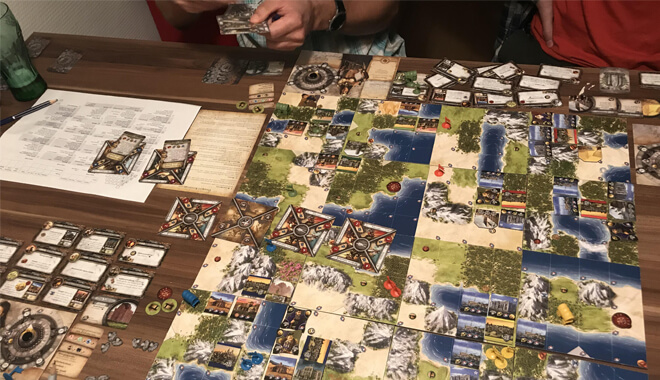
I know, cool, right? The possibilities are endless here. The Witcher, for example, did it backward and transferred its dark and gritty fantasy setting to the tabletop.
Some famous examples of board games to video game transitions are classics like Carcassonne, Civilization, Ticket to Ride, Catan, and Axis & Allies.
A common thread I find throughout all of these titles and more are great game mechanics. They are all relatively easy to pick up, have addictive features, and are able to be played over and over.
An advantage for the video game versions is that they can usually harness artificial intelligence for those who want to keep gaming even when there aren’t friends around to wipe the floor with.
Civilization, based on the widely popular PC series made by Sid Meier, was released as a board game. It included many of the same addictive features that kept players up late at night clicking the ‘next turn’ button.
If you think that the popularity of board games is soft, think again. Again, Adam Poots and Kingdom Death require a staggering $400, (not including expansions), for the board game.
And people are willing to fork over the cash. Like with many mediums, people can be extremely passionate, and if you tap into their interests, or make the game addictive, you, like Adam Poots, could be working on your extremely popular game well into the future.
Since 2015, Kingdom Death’s creator has been making miniatures, expansions, and shipping the extremely detailed final product that throws the players into a grim and dark fantasy setting.
Will You Create the Next Amazing Board Game?
If you follow these steps, you will be well on your way to creating the board game of your dreams. If you are successful enough, perhaps you could partner up with video game companies and translate your game into a great gaming title.
With a great foundation for a game formed from creativity and proper outlining, you can easily move on to the next steps to actually making a tangible product.
It may prove to be a long road, but with playtesting and honing of your material, you could have the next Kingdom Death on your hands. Most importantly, you need to have fun with the process.
If you don’t have fun with your project, what is it all for?
Go out there and create the next big thing!
Image Source: (thegamesteward, bbc, engadget, newstatesman)

